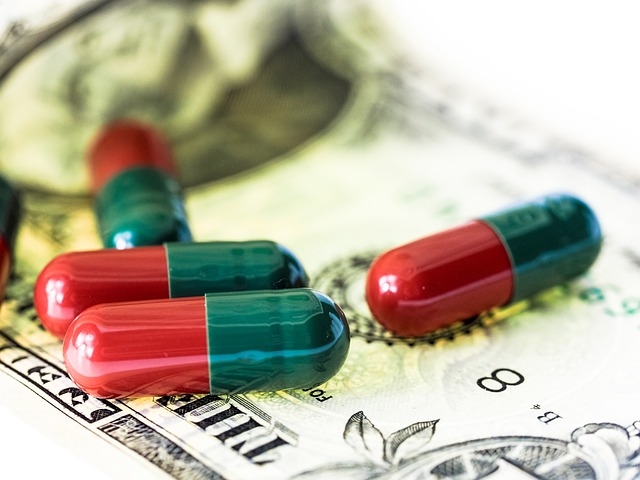– Commentary –
12 May 2018. During the 2016 campaign, Donald Trump assailed pharmaceutical companies for their drug pricing practices, using terms like “getting away with murder.” Thus his speech yesterday (11 May) was highly anticipated for signs of bold new plans for addressing the problem.
Although he called it, “the most sweeping action in history to lower the price of prescription drugs for the American people,” the plan was anything but that. By most accounts, the speech fell flat. The plan has a few good steps like negotiating prices under Medicare part D that covers prescription drug benefits, and apparently cracking down on game-playing by brand-name drug companies to keep generics off the market.
But what didn’t fall flat were pharma and health care stock prices. At the closing bell yesterday, according to Reuters, the S&P 500 health care index jumped 1.5 percent, the largest single-day gain in a month. And as noted by the New York Times, the Nasdaq Biotechnology Index rose 2.7 percent. The sense of relief that Trump didn’t mess with anything important to the pharma industry was palpable.
Some day Congress or the president or both will get serious about escalating prescription drug prices which are rapidly getting out of reach for a large portion of the American public. So here’s a guide, with links to recent Science & Enterprise stories, to help judge if any new drug pricing policy has prospects for success.
Does the solution include participation by pharmaceutical companies?
Drug companies are every politician’s favorite piñata, but unless drug makers have a stake in the outcome of any pricing reform proposals, the companies will fight them to the end. The pharma industry wants to provide solid returns for shareholders, but they wouldn’t be in this business if they didn’t care about helping people get or stay well. Make the companies a partner in the outcome and you vastly increase your chances of success.
Does the plan address the high costs and risks for developing drugs?
Most proposals for bringing down drug prices talk about reducing the prices of drugs after they’re on the market, and rarely if ever deal with the high costs and risks of failure faced by drug companies when they bring new products to market. Those costs and risks are real. One can argue over the ways the numbers are calculated, but conducting clinical trials — tests of experimental drugs with human subjects which make up a large chunk of development costs — are a complex exercise involving many highly skilled, well-paid people over a long period of time.
Yet many other aspects of developing drugs, such as discovering new therapy candidates and preclinical safety testing, can be automated and simulated with advanced technological tools, such as organs on chips and algorithms using artificial intelligence. The industry needs to take a hard, serious look at its processes for developing new drugs and find ways of sharply lowering their costs across the board. This is another reason for involving the pharma industry in the solution. There’s no way this can be forced from the outside.
Is the entire drug development process covered?
In his speech yesterday, Trump railed against “middlemen” such as distributors and pharmacy benefit managers, but the more important supply chain for drug makers is the intellectual property generated by academic labs and biotechnology companies. Science & Enterprise reports often on lucrative licensing deals and acquisitions between drug makers and biotech companies reaching billions of dollars, which at some point get passed on the consumers in prices for prescription drugs. While academic scientists and biotech companies deserve to get rich for their genius and hard work, mechanisms are needed to keep those rewards from getting out of hand and forcing up prices for the products that result.
How are prices determined for precision medicine treatments?
Precision medicine — personalized therapies based on a patient’s molecular make-up, as shown in genomic sequencing — offers a whole new way of treating disease. And as a result, precision medicine offers an opportunity to come up with fair and transparent pricing models designed for individual patients. NIH’s All of Us initiative, a precision medicine program that began this month enrolling 1 million participants, offers a good opportunity to address the prices people will pay for this new type of medicine.
Watch for new treatment technologies other than conventional drugs.
Science & Enterprise often covers new ways of treating disease, such as electronic nerve stimulation and therapies using microbes to harness new signaling pathways to tissue and organs in the body. These therapies not only offer different ways of treating disease, they often involve very different technologies and could provide alternatives to conventional pharmaceuticals, both scientifically and economically.
In addition, the increasing use of mobile and wearable devices, along with cloud computing and big data analytics, are creating new relationships between patients and health care providers, as well as different economic models reflecting those new relationships. These emerging new models are what Silicon Valley likes to call disruption, and if there’s an industry that’s ripe for disruption right now, it’s pharmaceuticals.
More from Science & Enterprise:
- Global Health R&D Cuts Threaten U.S. Economy, Jobs
- Hospital Costs Lead to Fewer Bankruptcies Than Thought
- Limited Industry Progress Seen on Microbial Resistance
- Report: Health System Not Ready for Alzheimer’s Therapies
- Open-Source Model Devised to Value Medical Technologies
Disclosure: The author owns shares in Pfizer and Johnson & Johnson
* * *


 RSS - Posts
RSS - Posts
You must be logged in to post a comment.